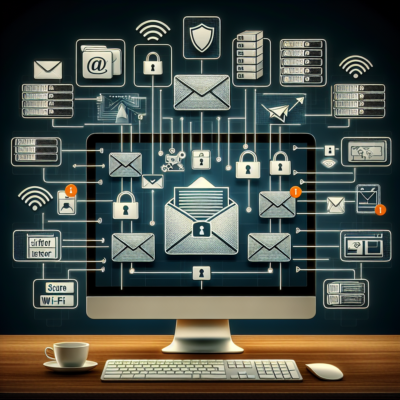
How to Get a Clean Inbox? Fighting Spam and Unwanted Emails
These days being more digitally driven than before, ensuring a hassle-free and clean email inbox is essential for businesses. Apart from a clean inbox which makes focusing on important communication easy, it also helps in another cause of Cyber Security. In this blog post we will touch on the subtleties of spam, what impact it has on your email security and some real-world tools & tactics that can help mitigate against Spam. We’ll also discuss how to organize your inbox, as well as the use of rented firewalls, servers, and routers for an even more robust email protection mechanism.
The Basics of Spam & Unwanted Emails
Loosely defined, spam is any unwanted e-mail that you did not opt-in to. These emails can be any unsolicited@somewhere in the following forms: marketing message, phishing scheme, and malware attached. The better one becomes in understanding SPAM, the more efficient he gets at fighting against it.
What Spam Emails Look Like
- Unsolicited and Bulk: You receive the same email, but unsolicited, from thousands of different people.
- Misleading Content: Consists of false or misleading information that deceives, or attempts to deceive people into listening.
- Hidden Malware: The link or attachment comes with an impractical file that secretly raises malware on your Device.
- Phishing Attempts: For stealing confidential information, such as passwords and credit card numbers.
Say you have an email address that came from somewhere like myemail.com, and then the company is blacklisted as spam; all of a sudden your inbox goes from 90% real emails to 80%, in addition to what a nuisance these offers can be.
There is much more to spam than just filling up your email – it also puts you in grave danger of having a breached email security system. Here’s how:
- Data Breaches: Links to phishing sites in spam messages often result in getting access to business-sensitive information.
- Situation of Malware Infection: Attachments and internal body are often other harmful software to the user, most commonly a virus.
- Decreased productivity: Trying to manage and filter the spam can take a lot of time, effort, and resources.
- Reputational Risk: When your reputation is tarnished because you fell for spam, consumer trust may diminish and cause problems in the long run.
Spam Reduction Tools and Techniques
Free spam bustersBe proactive, but have the latest tools Here are a few practical steps:
Configure Spam Filters
- Built-in Email Filters: Practically all email clients, including Gmail or Outlook deploy spam filters. Update your spam filter regularly.
- Build your own Filters: Construct filters according to different keywords, senders or phrases spam emails commonly contain.
To do this, you need to block them using firewalls or by shutting down their servers so that they can no longer access their target from your router.
- Rent Advanced Firewalls: is a barrier between your network and outside attackers who mainly control or block the traffic by using rule sets. When done properly, renting next-gen firewalls can add an additional layer to secure your perimeter.
- Dedicated Email Servers: Rent dedicated linked email servers that have security protocols like firewalls etc.
- Security Routers: With the availability of routers with a high-security index, you can assure yourself that all your data transit through any router is safely monitored.
Best Practices for Inbox Management
In a well-organized email environment, how you manage your inboxes is paramount to help prevent human errors. Here are some best practices:
Clean Your Inbox Regularly
- Delete Old Emails: Regularly delete old, unnecessary emails.
- Unsubscribe from unwanted newsletters: Find the Unsubscribe link at the end of all Newsletters.
- Archiving Old Emails: Archive old emails that you may need to refer back to in the future, but not right then.
Educate Your Team
- Training schedules: Organize training for spam and phishing attempts frequently.
- Clear Communication Policies: Set guidelines regarding email use and what to never open.
Monitor Email Activity Review
- Scheduled Audits: Keep an eye on email activity with audits that spot anything that might be out of place in your tenant.
- Update Email Security Policies: Update your security policies about email spam to new techniques used by spammers.
Conclusion: Keep the Spam Away From Your Inbox
To conclude, the entire process that assists us in ensuring a spam-free inbox is multifaceted and ranges from understanding what constitutes as spam itself to how it affects email security processes and uses an amalgamation of everything (tools, techniques & best practices) at our disposal.
Adding the additional layer of renting firewalls, servers, and routers is always a boon when it comes to email security for businesses as this filters out spams and unwanted emails realistically. So stay on top of your email; a clean inbox is not only about streamlining the chaos but it’s an important step towards maintaining good security and productivity in business.
With these efforts in place, you can benefit from an email communication system that is both streamlined and secure – thereby taking your overall business efficiency and security to a brand new level.
This guide, in its entirety should be enough to ensure the business owners and cybersec professionals gather a clear understanding of how spam can get out effectively. You can keep your inbox clean and safe by being alert to spam, preventing it from reaching you in the first place without having access more should be an automatic experience as well.